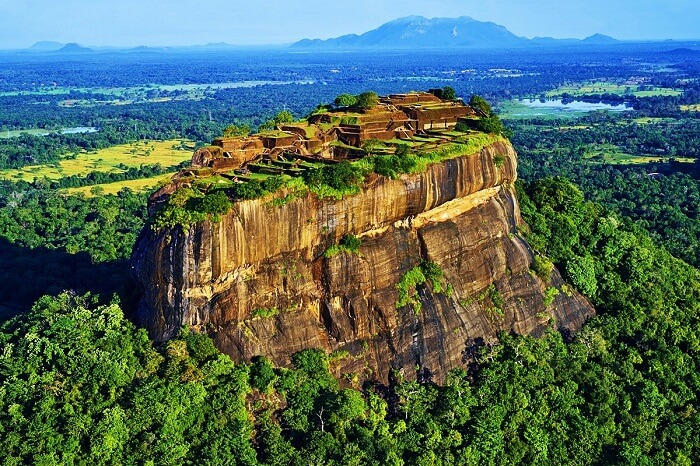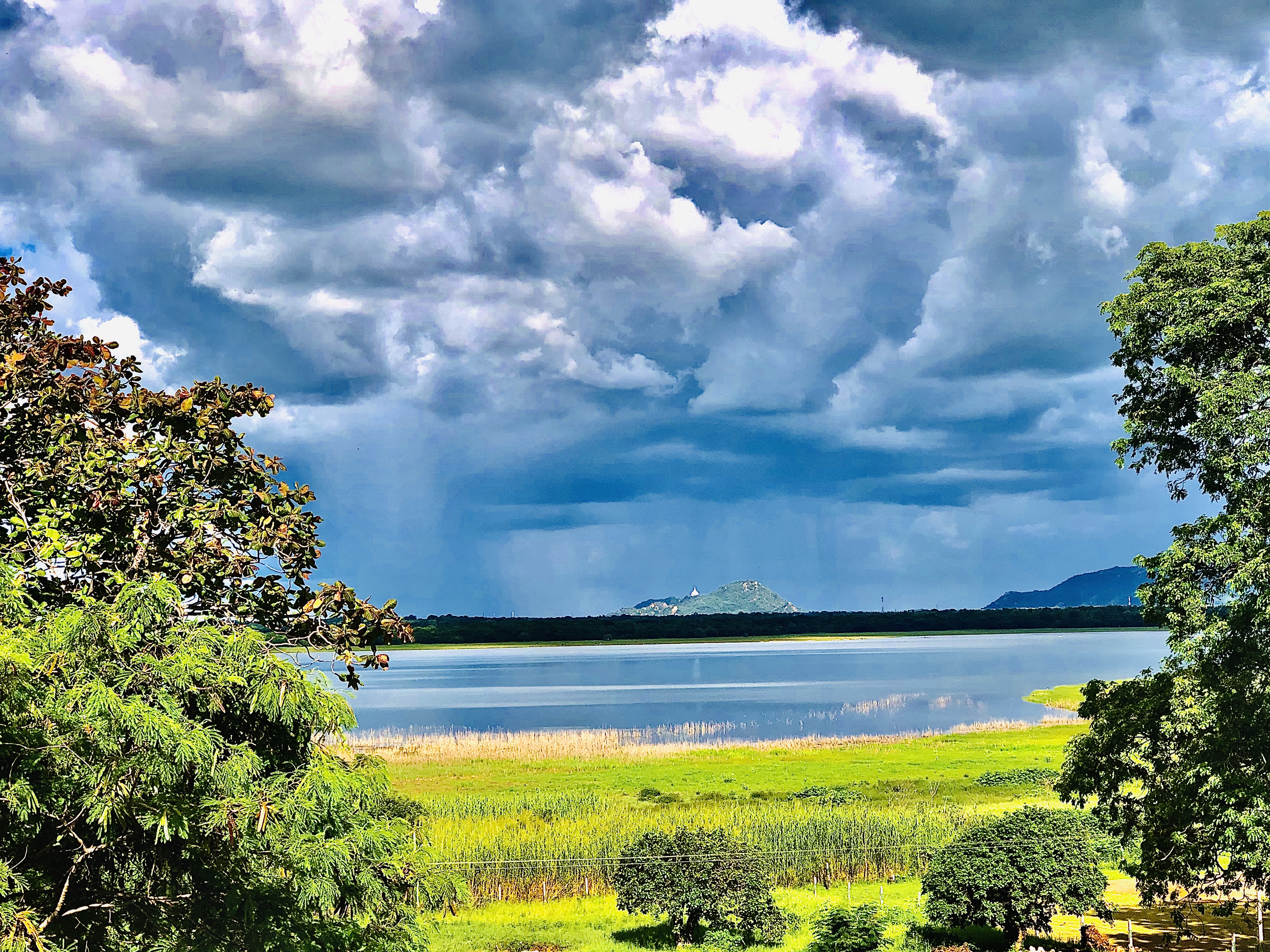|
Sri Lankan Irrigation Network
The irrigation works in ancient Sri Lanka were some of the most complex irrigation systems of the ancient world. The earliest examples of irrigation works in Sri Lanka date from about 430 BCE, during the reign of King Pandukabhaya, and were under continuous development for the next thousand years. In addition to constructing underground canals, the Sinhalese people, Sinhalese were the first to build completely artificial reservoirs to store water, referred to as Tank cascade system, tanks (Sinhala: , , romanized: ). The system was extensively restored and further extended during the reign of King Parākramabāhu (1153–1186 Common era, CE). The first tank which can be identified with certainty was built by King Pandukabhaya, who reigned from 437 to 367 BC. It is said that he had three tanks built, namely , , and . Of these, only one, , can be identified with an extant tank, . Long after King Pandukabhaya, King Parākramabāhu I had many tanks built, with one large tank called st ... [...More Info...] [...Related Items...] OR: [Wikipedia] [Google] [Baidu] [Amazon] |
Common Era
Common Era (CE) and Before the Common Era (BCE) are year notations for the Gregorian calendar (and its predecessor, the Julian calendar), the world's most widely used calendar era. Common Era and Before the Common Era are alternatives to the original Anno Domini (AD) and Before Christ (BC) notations used for the same calendar era. The two notation systems are numerically equivalent: " CE" and "AD " each describe the current year; "400 BCE" and "400 BC" are the same year. The expression can be traced back to 1615, when it first appears in a book by Johannes Kepler as the (), and to 1635 in English as " Vulgar Era". The term "Common Era" can be found in English as early as 1708, and became more widely used in the mid-19th century by Jewish religious scholars. Since the late 20th century, BCE and CE have become popular in academic and scientific publications on the grounds that BCE and CE are religiously neutral terms. They have been promoted as more sensitive to non-Christia ... [...More Info...] [...Related Items...] OR: [Wikipedia] [Google] [Baidu] [Amazon] |
Economic History Of Sri Lanka
The mixed economy of Sri Lanka was valued at LKR 29.89 trillion (around $99 billion) in 2024 by gross domestic product (GDP) and $342.6 billion by purchasing power parity (PPP) Sri Lanka's economy expanded by 5.0% in 2024, marking a strong recovery from the 2022 economic crisis. Sri Lanka has met the Millennium Development Goal (MDG) target of halving extreme poverty and is on track to meet most of the other MDGs, outperforming other South Asian countries. Sri Lanka's poverty headcount index was 4.1% by 2016. Since the end of the three-decade-long Sri Lankan Civil War, Sri Lanka has begun focusing on long-term strategic and structural development challenges and has financed several infrastructure projects. High foreign debt, economic mismanagement under the governments of Gotabhaya and Mahinda Rajapaksa, and reduced tourism revenue led to the country defaulting on its sovereign debt in April 2022. The economy contracted 7.8% in 2022, and the percentage of the population earni ... [...More Info...] [...Related Items...] OR: [Wikipedia] [Google] [Baidu] [Amazon] |
Ancient Constructions Of Sri Lanka
The ancient Sri Lankan people excelled in the construction of tanks (''Wevas'') or reservoirs, dagobas (or stupas), and palaces in Sri Lanka, as evident from the ruins which displays a rich variety of architectural forms. Irrigation works Major irrigation schemes of Sri Lanka, as evident from the earliest written records in the Mahawansa, date back to the fourth century BCE ( Parker, 1881; Brohier, 1934). The purpose and determination in the construction of the irrigation systems are depicted by the words of Parakrama Bahu I, 1153–1186 CE: ''"Let not even a drop of rain water go to the sea without benefiting man"''. The Sri Lankan chronicle, the Culavamsa which was written in the Buddhist canonical language Pali, enumerates his works both as a provincial ruler in western Sri Lanka and later as the monarch of the whole country: he either built or restored 163 major tanks (reservoirs), 2,617 minor tanks, 3,910 irrigation channels, 328 stone sluices and 168 sluice blocks, ... [...More Info...] [...Related Items...] OR: [Wikipedia] [Google] [Baidu] [Amazon] |
Irrigation And Water Management
Irrigation (also referred to as watering of plants) is the practice of applying controlled amounts of water to land to help grow crops, landscape plants, and lawns. Irrigation has been a key aspect of agriculture for over 5,000 years and has been developed by many cultures around the world. Irrigation helps to grow crops, maintain landscapes, and revegetate disturbed soils in dry areas and during times of below-average rainfall. In addition to these uses, irrigation is also employed to protect crops from frost, suppress weed growth in grain fields, and prevent soil consolidation. It is also used to cool livestock, reduce dust, dispose of sewage, and support mining operations. Drainage, which involves the removal of surface and sub-surface water from a given location, is often studied in conjunction with irrigation. There are several methods of irrigation that differ in how water is supplied to plants. Surface irrigation, also known as gravity irrigation, is the oldest form of i ... [...More Info...] [...Related Items...] OR: [Wikipedia] [Google] [Baidu] [Amazon] |
Henry Parker (author)
Henry Parker (1849–unknown) was a British engineer in colonial Ceylon during the Victorian era. He was attached to the Irrigation Department from 1873 to 1904. During his work as an engineer he developed an admiration for the skills displayed by the ancient Sinhalese at the time of the construction of their reservoirs. Parker is renowned for having studied and compiled the folklore of Sri Lanka, becoming an authority on the subject. He was the author ... [...More Info...] [...Related Items...] OR: [Wikipedia] [Google] [Baidu] [Amazon] |
Raja Rata
Rajarata ( (); ; meaning "King's country") was one of three historical regions of the island of Sri Lanka for about 1,700 years from the 6th century BCE to the early 13th century CE. Several ancient cities, including Tambapanni, Upatissa Nuwara, Anuradhapura and Polonnaruwa, were established as capitals within the area by successive rulers. Rajarata was under the direct administration of the King (raja/king, rata/country). Two other areas, Mayarata and Ruhunurata, were ruled by the king's brothers "Mapa" and "Epa" . The Magha invasion in the 13th century brought about the end of the Rajarata kingdom. History and kingdoms The first kingdom in Rajarata was established by Prince Vijaya in 543 BCE. He settled near the delta of the Malvathu River between Chilaw and Mannar. According o a local myth, Prince Vijaya married a local princess, Kuveni, to gain control of Rajarata. With her help, he betrayed and killed all of the regional leaders. After his death, the administrative center wa ... [...More Info...] [...Related Items...] OR: [Wikipedia] [Google] [Baidu] [Amazon] |
Parakrama Samudra
Parakrama Samudra (or King Parakrama's sea or the Sea of King Parakrama) is a shallow reservoir ( wewa), consisting of five separate wewa (reservoirs) (thopa, dumbutulu, erabadu, bhu, kalahagala tanks) connected by narrow channels in Polonnaruwa, Sri Lanka Sri Lanka, officially the Democratic Socialist Republic of Sri Lanka, also known historically as Ceylon, is an island country in South Asia. It lies in the Indian Ocean, southwest of the Bay of Bengal, separated from the Indian subcontinent, .... The northernmost reservoir is the oldest and referred to as ''Topa wewa'' (Sinhalese wewa is almost equal to English word lake or reservoir, but used unique Sri Lankan technology) built around 386 AD. The middle section ''Eramudu wewa'' and the southernmost portion, at the highest elevation, is ''Dumbutula wewa'', both sections were added and the reservoir expanded during the reign of King Parâkramabâhu I. [...More Info...] [...Related Items...] OR: [Wikipedia] [Google] [Baidu] [Amazon] |
Abhaya Wewa
Abhaya Wewa ( Sinhalese: ), historically Abhayavapi ( Sinhalese: ) or Bassawakkulama reservoir, is a reservoir in Sri Lanka, built by King Pandukabhaya who ruled in Anuradhapura Anuradhapura (, ; , ) is a major city located in the north central plain of Sri Lanka. It is the capital city of North Central Province, Sri Lanka, North Central Province and the capital of Anuradhapura District. The city lies north of the cur ... from 437 BC to 367 BC, after constructing the city. It was constructed in 380 BC. The dam of the reservoir is 10 m high. The water of the reservoir is also accumulated in the Giritale and Kantalai. Currently, the reservoir is about 255 acres. The embankment of the reservoir is about 5910 feet long and 22 feet high above the sill level of the sluice. Size Area is ; the length of the ''Waw Kandiya'' ( Sinhalese: English: embankment) is and height is . The width of the top of the embankment is to . Purpose Built inside the ancient Anuradhapura, it ... [...More Info...] [...Related Items...] OR: [Wikipedia] [Google] [Baidu] [Amazon] |
Parākramabāhu
Parākramabāhu I ( Sinhala: මහා පරාක්රමබාහු, 1123–1186), or Parakramabahu the Great, was the king of Polonnaruwa from 1153 to 1186. He oversaw the expansion and beautification of his capital, constructed extensive irrigation systems, reorganised the country's army, reformed Buddhist practices, encouraged the arts and undertook military campaigns in South India and Burma. The adage, "Not even a drop of water that comes from the rain must flow into the ocean without being made useful to man" is one of his most famous utterances." In 1140, Parakramabahu following the death of his uncle, Kitti Sri Megha, Prince of Dakkinadesa, ascended the throne of Dakkhinadesa. Over the next decade, improved both Dakkhinadesi infrastructure and military. Following a protracted civil war, he secured power over the entire island around 1153 and remained in this position until his death in 1186. During Parākramabāhu's reign, he launched a punitive campaign against ... [...More Info...] [...Related Items...] OR: [Wikipedia] [Google] [Baidu] [Amazon] |
Sigiriya Moat 2011
Sigiriya or Sinhagiri (''Lion Rock'' , , pronounced SEE-gi-ri-yə) is an ancient rock fortress located in the northern Matale District near the town of Dambulla in the Central Province, Sri Lanka. It is a site of historical and archaeological significance that is dominated by a massive column of granite approximately high. According to the ancient Sri Lankan chronicle the ''Cūḷavaṃsa'', this area was a large forest, then after storms and landslides it became a hill and was selected by King Kashyapa (CE 477–495) for his new capital. He built his palace on top of this rock and decorated its sides with colourful frescoes. On a small plateau about halfway up the side of this rock he built a gateway in the form of an enormous lion. The name of this place is derived from this structure; ''Sinhagiri'', the Lion Rock. The capital and the royal palace were abandoned after the king's death. It was used as a Buddhist monastery until the 14th century. Sigiriya today is a UNESCO l ... [...More Info...] [...Related Items...] OR: [Wikipedia] [Google] [Baidu] [Amazon] |
Tank Cascade System
The tank cascade system () is an ancient irrigation system spanning the island of Sri Lanka. It is a network of thousands of small irrigation tanks () draining to large reservoirs that store rainwater and surface runoff for later use. They make agriculture possible in the dry-zone, where periods of drought and flooding otherwise make it difficult to support paddy fields and livestock. Originating in the 1st millennium BCE, the system was designated as a Globally Important Agricultural Heritage System by the United Nations Food and Agriculture Organization in 2017. Centralized bureaucratic management of large-scale systems was implemented from the 3rd to the 13th centuries. Small-scale systems continued to be well-maintained up until the abolishment of rajakariya, compulsory labor, following British Uva Rebellion, consolidation of control over the island. Efforts since independence to rehabilitate the tanks have resulted in much of the system being restored, as well as the additi ... [...More Info...] [...Related Items...] OR: [Wikipedia] [Google] [Baidu] [Amazon] |







